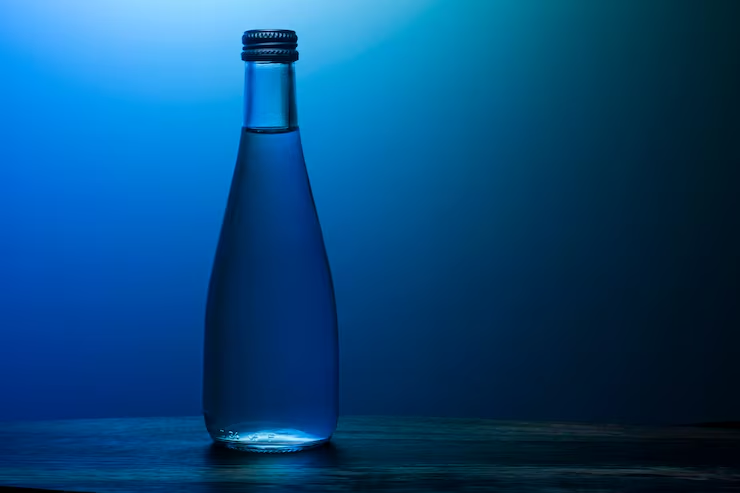India’s Thirst for Purity: Decoding the Packaged Drinking Water Story
The sight of a bottled water brand—whether a small pouch or a 20-liter jar—is an omnipresent part of the Indian landscape. From bustling metropolitan streets to remote railway stations, packaged drinking water is no longer a luxury, but a staple necessity. But what drives this massive market, and what are the complexities behind that clear, conveniently packaged water?
Let’s dive into the dynamic world of packaged drinking water in India.
The Unstoppable Rise: Why India Reaches for the Bottle
The packaged drinking water market in India is one of the fastest-growing segments in the beverage industry, with a growth rate fueled by several key factors:
- Water Quality Concerns: Despite government efforts, a significant portion of the Indian population still lacks access to reliably safe, clean tap water. Contamination from arsenic, fluoride, or industrial pollutants makes packaged water the perceived safest and most convenient option.
- Urbanization and Lifestyle: As more people migrate to cities, fast-paced urban lifestyles increase the demand for convenient, on-the-go hydration. A bottle of water is an easy grab for travelers, office-goers, and students.
- Rising Health Awareness: Growing consciousness about health and hygiene, particularly post-pandemic, has made consumers more willing to pay a premium for products they believe are purified and safe.
- Economic Growth: Rising disposable incomes among the middle class in urban and even semi-urban areas have made packaged water more affordable and accessible.
The market is massive, with projections indicating sustained double-digit growth, driven by both the mass-market affordable options and the rapidly expanding premium segments like natural mineral water and functional/sparkling water.
The Clear Difference: Categories and Quality Standards
Not all bottled water is created equal. The Indian market is broadly categorized:
- Packaged Drinking Water (PDW): This is the largest segment. It is typically sourced from surface, underground, or civic water supply, and then undergoes a rigorous treatment process—including filtration, Reverse Osmosis (RO), UV treatment, and disinfection—before being packaged.
- Natural Mineral Water: Sourced directly from a recognized underground source (like a natural spring) and bottled close to the source. This water retains its natural mineral content and cannot be chemically treated.
Crucially, in India, all packaged water sold must adhere to mandatory quality standards set by the Bureau of Indian Standards (BIS) and the Food Safety and Standards Authority of India (FSSAI).
- The ISI Mark is mandatory for bottled water, specifically:
- IS 14543 for Packaged Drinking Water.
- IS 13428 for Packaged Natural Mineral Water.
- This certification ensures the water meets strict physical, chemical, and microbiological quality parameters.
The Environmental Elephant in the Room
For all its convenience, the packaged water industry faces a massive challenge: plastic waste.
The sheer volume of single-use PET bottles is a major environmental concern, contributing significantly to landfills and ocean pollution. In response, the industry and the government are slowly pivoting:
- Extended Producer Responsibility (EPR): Regulations mandate that producers are responsible for collecting and recycling a certain percentage of the plastic they introduce into the market.
- Sustainability Focus: Brands are exploring alternatives like recyclable glass, aluminum cans, and increasing the use of recycled PET (rPET) in their packaging.
- The 20-Liter Jar Economy: The widespread use of the large, reusable 20-liter water can in homes and offices offers a more sustainable, high-volume alternative to single-serve bottles.
Beyond the Bottle: The Future of Hydration
The future of packaged water in India is not just about purity, but about innovation and responsibility:
- Premiumization: The demand for high-end products like alkaline water, sparkling water, and infused water is growing, catering to health-conscious urban consumers looking for alternatives to sugary sodas.
- Direct-to-Consumer (D2C): Online platforms and D2C models are gaining traction, especially for bulk purchases like the 20-liter cans, streamlining logistics and improving customer retention.
- The Purification Counter-Trend: Advances in domestic water purifiers (RO/UV systems) are creating substitution pressure, especially in urban areas, as many consumers find a long-term in-house solution more cost-effective.
The journey of packaged drinking water in India is a microcosm of the country’s rapid development—a story of rising necessity, regulatory compliance, massive market scale, and a critical look at sustainability. While the quest for safe drinking water continues to drive the market, the industry’s next chapter will undoubtedly be defined by its ability to balance convenience and quality with environmental stewardship.


